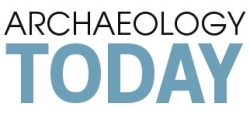
December 17th, 2013
Cat Domestication in China 5,300 Years Ago
A study conducted by researchers at the Chinese Academy of Sciences has produced the first direct evidence for the processes of cat domestication. Led by Yaowu Hu, he and his colleagues analyzed eight bones from at least two wild cats excavated from the site of the ancient Chinese village of Quanhucun, using radiocarbon dating and isotopic analyses of carbon and nitrogen traces in the bones of the cats. The analysis showed that the cats were preying on animals that lived on farmed millet — probably rodents. Archaeological evidence indicated that the village farmers had problems with rodents in the grain stores. In essence, the cats and the villagers had developed a kind of symbiotic relationship. (Popular Archaeology)
Ancient Pig-Shaped Baby Bottle Found
Italian archaeologists have discovered an ancient terracotta pig which worked as a toy as well as a modern-day baby bottle. Known as guttus, the unique vessel dates back about 2,400 years, when the “heel” of Italy was inhabited by the Messapian people, a tribal group who migrated from Illyria (a region in the western part of the Balkan peninsula) around 1000 B.C. (Discovery News)
Yes, Neanderthals Buried Their Dead, Say Researchers
An international team of scientists have announced new evidence supporting the long-debated hypothesis that Neanderthals, a now extinct ancient human cousin species that lived more than 30-40,000 years ago, intentionally buried their dead. (Popular Archaeology)
Mummy Mystery: Multiple Tombs Hidden in Egypt’s Valley of Kings
Multiple tombs lay hidden in Egypt’s Valley of the Kings, where royalty were buried more than 3,000 years ago, awaiting discovery, say researchers working on the most extensive exploration of the area in nearly a century. The hidden treasure may include several small tombs, with the possibility of a big-time tomb holding a royal individual, the archaeologists say. (Live Science)
Storms could reveal new archaeological sites in Scotland
The recent storms that hit the Scottish coastline could reveal important new archaeological sites, according to Fife scientists. St Andrews University archaeologists are appealing to the public to help find sites that have been uncovered by the storms. They also hoping people contact them to record local sites that have been damaged by the recent bad weather. (BBC News)





